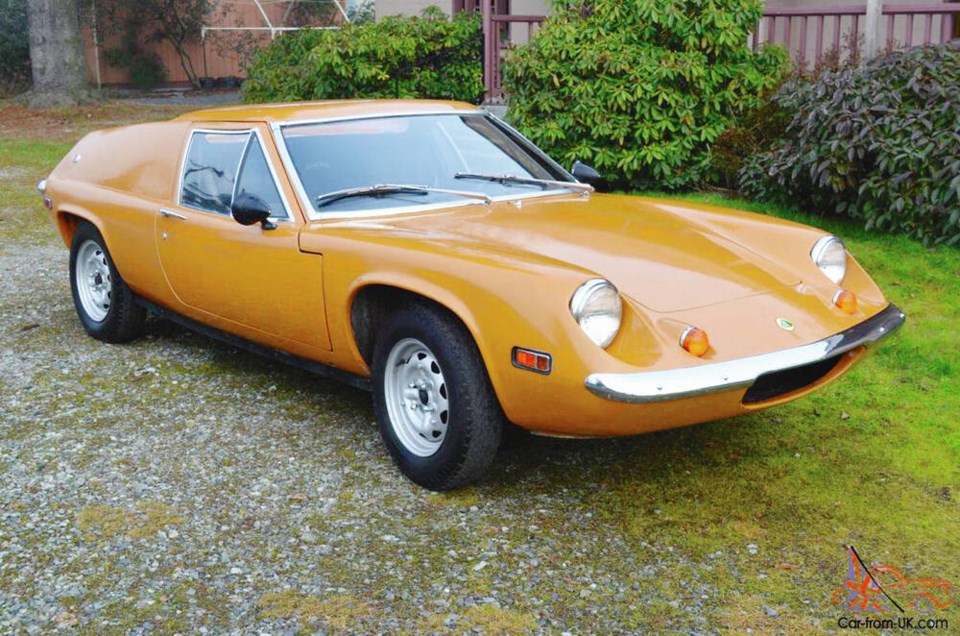After successfully building and racing cars based on such mundane machinery as the tiny Austin Seven, English engineer Colin Chapman launched his modest Lotus Engineering Co. in 1952 to build small kit cars. As insurance, he retained his engineering day job.
Lotus cars were the essence of efficiency in both space and materials. They followed Chapman’s philosophy of “adding lightness,” reducing a component’s mass to the minimum, and then if possible designing it to perform multiple purposes. It was typical of Chapman’s talented and innovative mind.
It was renamed Lotus Cars Ltd. in 1959 by which time Chapman had progressed to competition cars that would challenge the world’s best. His mid-engine racers became formidable competitors in both Formula 1 and American open wheel racing.
Under the Team Lotus banner, Lotuses would carry their drivers to Formula 1 titles in 1963, ’65, ’68, ’70, ’72 and ’78. Although its Formula 1 success faded, it continued racing until 1994. The Lotus name returned to F1 in 2012 under new ownership.
In Indy car racing, Scotsman Jim Clark won the 1965 Indianapolis 500 in a Lotus-Ford, after finishing second in 1963. It finalized the Indy mid-engine revolution, putting the last nail in the coffin of the traditional big front-engine Indianapolis roadster.
While mounting the engine between the rear axle and the driver became the racing norm, Chapman’s road-going Lotus Sevens, Elites and Elans kept front engines. The Europa would change that.
When Renault introduced its front-wheel drive 1965 16 model, Chapman envisioned using its engine and driveline to create a mid-engined car by reversing the longitudinal engine/transaxle and placing it behind the driver. A deal was struck with Renault for powertrains, and Lotus began creating its Europa road car.
The Europa followed the Elan’s form: a fibreglass body bonded, later bolted, to a steel backbone frame. The frame forked at the rear with the engine mounted between the two legs.
Suspension was fully independent with A-arms and coil springs in front. At the rear were lower A-arms, upper lateral links and upper and lower trailing arms with coil springs. Rack-pinion steering came from Triumph.
Renault’s 1.5 litre, 58 horsepower, overhead valve, aluminum inline four was tuned by Renault to produce 78 horsepower for the Europa.
The radiator was in the front of the car ahead of a small luggage compartment, complementing the trunk behind the engine. Power went to the rear wheels though a four-speed manual transmission.
The fibreglass, two passenger coupe body stood only 1,080 mm high, which gave a sleek profile but awkward entry and exit. Once inside, accommodation was snug with driver and passenger wedged between the high central frame member and the doors.
A sharply tapered hood, grille-less front end and headlights set in “scoops” made the Europa clean, stylish and aerodynamically efficient.
Rear “flying buttresses” extending from the roof along the tops of the rear fenders earned it the nickname “bread van.” These and a narrow window severely reduced rear visibility and the buttresses were lowered in 1972.
When Lotus unveiled the Europa late in 1966 it was intended for Continental Europe with the hope its French driveline and Europa name would facilitate entry into the recently formed Common Market. By 1969, it was made available in Britain and in the early 1970s Europas were officially imported to North America.
Road & Track (5/70) tested a Europa S2 with the 1.5-litre engine with a reported 82 horsepower. The 662 kg (1,460 lb) coupe accelerated to 60 mph (97 km/h) in 11.2 seconds, which testers noted was slower than other coupes such as the Datsun 240Z, Opel GT and Volvo 1800E. Top speed was 109 mph (175 km/h).
The testers found the steering with its quick 2-1/2 turns lock-to-lock to be crisp and the cornering and braking excellent. They disliked the lack of rear visibility and the disconcerting feeling that other drivers couldn’t see the extremely low Europa. The cabin was also cramped and unsuitable for tall drivers.
To improve the moderate performance, Lotus installed the larger Renault 16TS’s 1,565 cc four for 1970, but the real boost came for 1972 with the Lotus-Ford 1.6 litre double overhead cam four Lotus Special. Road & Track (11/73) tested it, now with five-speeds and 113 horsepower, and recorded a much more spirited zero to 60 (97) in 9.6 seconds and top speed of 117 mph (188 km/h).
The Lotus Europa was discontinued in 1975, replaced by the mid-engined Esprit with styling by famed Italian designer Giugiaro. This wedge-shaped coupe was faster and more expensive than the Europa, marking Lotus’s move to more upmarket cars.
Over its lifetime about 9,200 Europas were produced. Its passing was not highly disappointing in view of its shapelier successor, but it could be credited with being a practical mid-engined car.



